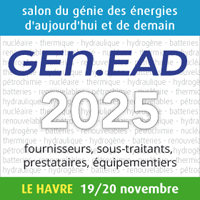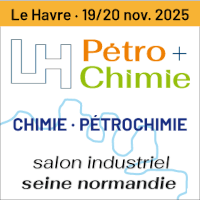nove.
02
2009 | Mountaineer: first power plant to separate and store carbon as developing plans jointly with RWE
he first integrated carbon capture and storage plant (CCS) makes its world debut at a hard-coal-fired power station. At New Haven, West Virginia, a demonstration plant of 20 megawatts capacity was formally commissioned today. The plant will separate out more than 100,000 tons of carbon per year which will be transported via pipeline to deep saline formations, i.e. salt-water-bearing sandstone strata, for storage on site. American Electric Power (AEP), the USA’s leading electricity generating company, Alstom and RWE are developing the project jointly. For the project, which is being realised at AEP's 1,300 MW Mountaineer hard-coal-fired power plant, Alstom has developed the chilled ammonia process, which separates CO2 from flue gas after combustion.
“The project marks a milestone in climate-protecting CCS technology,” said Dr. Johannes Lambertz, CEO of RWE Power. “For the first time, we have gained experience from a large-scale trial along the whole process chain – from separation of carbon from flue gas to transport and storage.” Dr. Georg Schöning, CEO of RWE Dea, added, “This project is important for improving our understanding of the practical applications of CCS. Every solution which may help reduce CO2 emissions and protect our climate must be explored. The trial of CCS technology, and proof of its safety, are important preconditions to ensure the necessary public acceptance.”
In a smaller pilot plant in the US state of Wisconsin, operated by Alstom and the Electric Power Research Institute, the chilled ammonia separation technology has proven itself in the past 18 months. AEP and RWE are also participants in this project. Now the plan is to demonstrate the process’s commercial-scale viability at Mountaineer. If this proves successful, AEP also plans to deploy the chilled ammonia process in a much larger follow-on project. Around 1.5 million tons of carbon should then be separated out each year, which corresponds to a commercial-scale plant.
Site-specific testing of carbon storage potential has been ongoing in the United States since as long ago as 2002. Exploratory drills to a depth of around 2,740 metres, and seismic studies at the Mountaineer power plant site, have proven the location’s suitability for storing carbon in geological deep strata. The Battelle Memorial Institute, a scientific and technological company active worldwide, and a leader in carbon storage research, is advising on the geological aspects of storage, while RWE Dea contributes its expertise from the upstream and gas storage business.
“Together with our partners, we want to expand our technology lead in CO2 avoidance techniques,” declared Johannes Lambertz. “Conditions at the Mountaineer site are ideal for this.”
“Commercialisation of carbon capture and storage technology is an essential component in a successful climate strategy, not only for the United States, which relies on coal-fired generation for about half of its electricity supply, but also for coal-dependent nations around the world,” said Michael G. Morris, AEP’s Chairman, President and Chief Executive Officer. “Coal is a low-cost, abundant fuel source, but its use is a significant source of carbon dioxide emissions. AEP, RWE and Alstom are known for engineering excellence and expertise. By working together we can find the best solution to this climate challenge.”
In late August of this year, RWE Power commissioned a pilot plant for carbon separation at its lignite-fired power plant site at Niederaussem, near Cologne. In cooperation with BASF and Linde,
RWE Power is testing an improved CO2 scrubbing process. This can be retrofitted to modern coal or gas-fired power plants from 2020. With an investment of €9 million, the project seeks to further develop a key technology of more climate-friendly electricity generation. Every hour, the Niederaussem pilot plant washes around 300 kilograms of CO2 from a slipstream of the power plant’s flue gas. The separation is 90 percent effective. The plant is testing all aspects of CO2 scrubbing under real conditions. Further research activities are investigating how to use the separated carbon dioxide.
Source : Communiqué RWE
Voir la fiche de l'entreprise RWE
| |
|
|






  
|